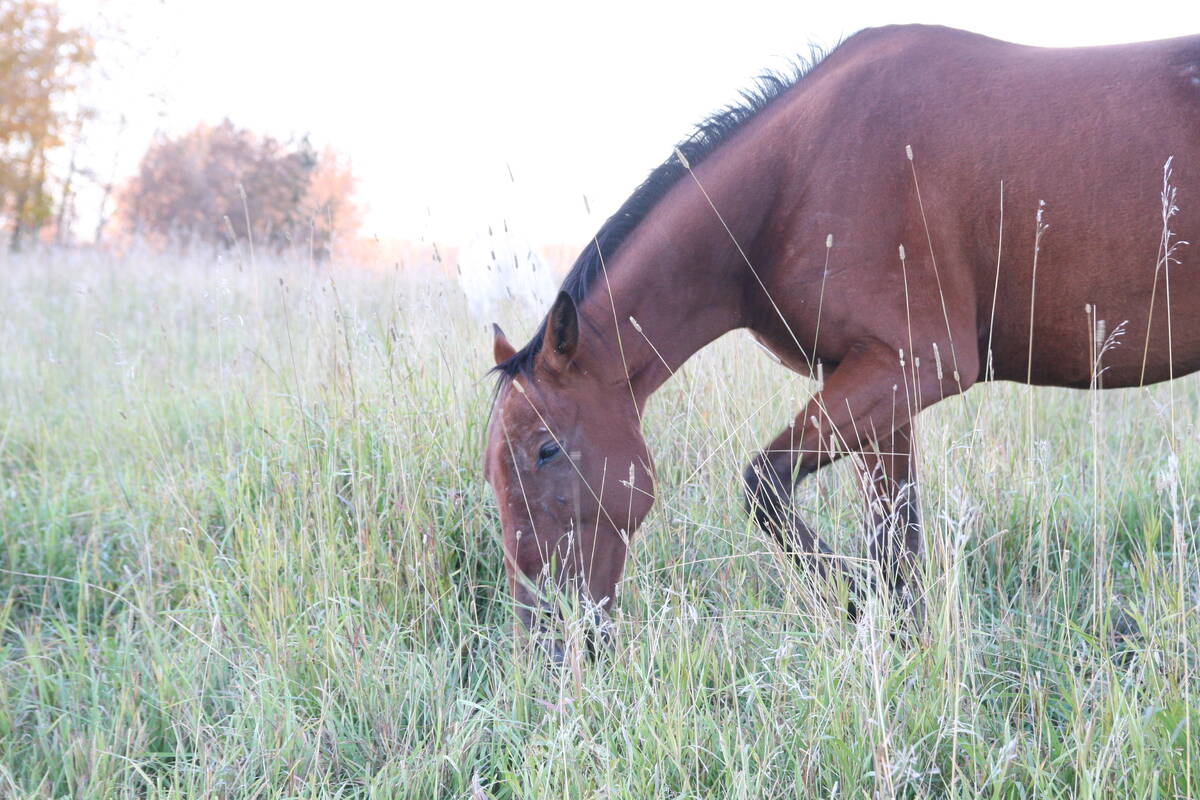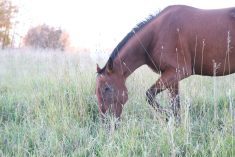“We think the ticks hitchhiked here with migrating waterfowl and dropped off the birds here. But, once an adult has fed and mated it can produce thousands of eggs.”
RON CLARKE
Lyme disease is on the move, and the ticks that can carry the disease are being found in Alberta.
“We’ve found a few of these ticks,” says Alberta Agriculture veterinarian Ron Clarke. “I think 12 so far this year, but they’ve all come from different areas of the province, from Pincher Creek and Okotoks to Stony Plain and Ardrossan.
Read Also

Beware giving horses too much iron
Horses consuming too much iron through diet or well water risk health problems like laminitis. Mineral testing forage and water is good practice for owners.
So far, nobody knows much about the risk, but it’s a nasty disease that can be crippling or lead to stillbirth if it’s not treated early.
The busiest part of the tick season is just beginning, so officials are warning Albertans to be on the lookout.
Lyme disease was first found in the northeastern U.S. states, and named after the first identified case in Lyme, Connecticut. It’s the most common of tick-borne diseases in humans. It’s considered an emerging disease, and spreading steadily in North America, but a similar disease has been known in Europe for hundreds of years.
Alberta was considered safe from Lyme disease because the ticks that carry it had never been seen here and all the people diagnosed with the disease had travelled to areas where they are common.
“We think the ticks hitchhiked here with migrating waterfowl and dropped off the birds here. But, once an adult has fed and mated it can produce thousands of eggs,” said Clarke.
Deer ticks the culprit
The disease is caused by a bacteria called Borrelia, which infects rodents and other small animals, and is spread by ticks. Deer ticks, officially western (or eastern) black-legged ticks, become infected when young ticks feed on mice or other rodents. Then, when ticks bite humans or pets, the bacteria can be transferred in the tick’s saliva.
The provincial vet lab in Edmonton identifies the species of ticks submitted by vets to monitor populations. They submit deer ticks to the National Health Lab in Winnipeg to find whether they carry Borrelia bacteria. At least one has tested positive this year, says Clarke.
The most common tick in Alberta is the Rocky Mountain tick, which is about the size of a pumpkin seed and most often found in the foothills and eastern slopes. The brown dog tick is about the same size, but more common on the prairie, says Clarke. Deer ticks are much smaller, but size varies with the four life stages and feeding status.
“Once they’re engorged with blood you really need an expert to identify them,” says Clarke.
As larvae and nymphs, ticks feed mainly on small animals. As adults, they tend to feed on bigger animals – deer, cattle, horses, humans and dogs. They take just one blood meal per life stage, but they can survive several months waiting for that meal. In areas where Lyme disease is common, small rodents provide a reservoir of infection and up to 55 per cent of ticks carry the bacteria.
The first sign of infection is a circular rash sometimes with a white circle near the centre that appears up to a month after tick feeding along with flu-like symptoms; fatigue, headache, fever, joint and muscle pain. If the infection is not treated early it can develop further causing skin, joint, nerve, and heart problems along with migraines and extreme fatigue, even meningitis and eventually arthritis and chronic neurological problems.














